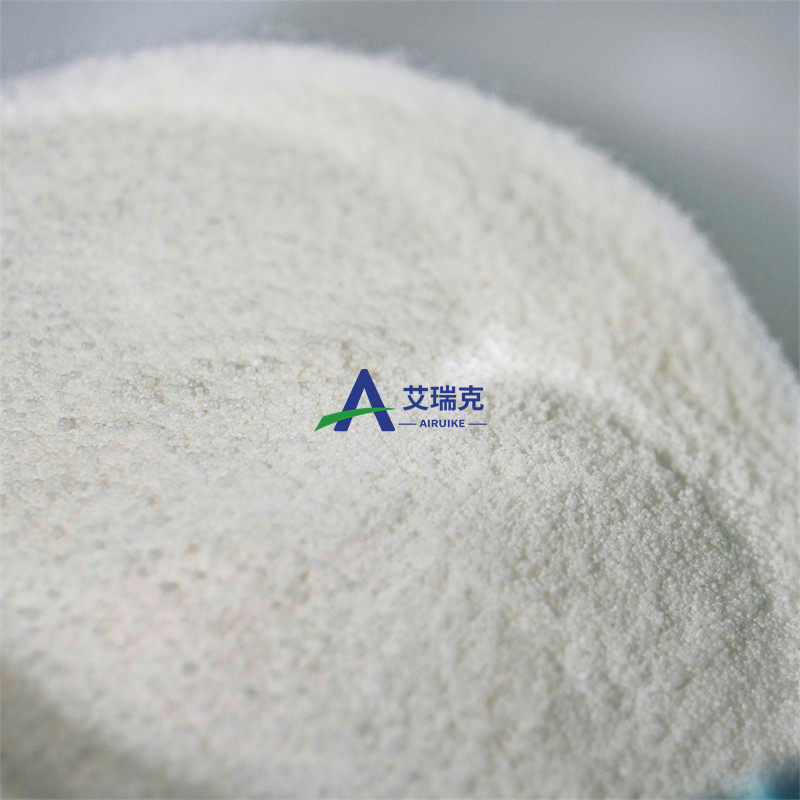Can intermittent fasting really make us healthier and live longer?
-
Last Update: 2020-01-01
-
Source: Internet
-
Author: User
Search more information of high quality chemicals, good prices and reliable suppliers, visit
www.echemi.com
January 1, 2020 / BIOON/ --2019 is about to pass, and we will usher in a brand new 2020 For many people, the new year is often a time to develop new habits and rededicate ourselves to personal health In the past 20 years, intermittent fasting has become one of the most popular health and fitness methods for many people, and some researches believe that this strategy can help lose weight , enhance body experience and prolong life So is there any scientific basis behind this diet strategy? Photo source: Rafael de Cabo, et al N Engl J Med 2019; 381:2541-2551 doi: 10.1056/nejmra 1905136, published in the New England Journal of medicine, entitled "effects of intermittent fast on health, aging, and In the review of "disease", researchers from Johns Hopkins University School of medicine revealed the effect of intermittent fasting on health, aging and disease In 1997, researcher Weindruch and sohal et al Published in NEJM journal, said that reducing the food supply (i.e caloric restriction) in animal body may have obvious effect on its aging and life span The researcher believed that the health effect of caloric restriction is due to the passive reduction of harmful active oxygen free radicals in the body However, it is not generally recognized that rodents usually consume all of their daily food distribution within a few hours after the food supply due to the restriction of calorie intake Therefore, their daily fasting time is up to 20 hours, during which the animal body usually produces ketogenic effect Since then, researchers have conducted a large number of animal studies and clinical studies comparing intermittent fasting Although the effect of intermittent fasting on the life span of the body is variable, studies on mice and non primates have shown that caloric restriction has a continuous impact on the health and life span of the body The most studied strategies of intermittent fasting are generally divided into three categories: 1) eating within a limited time every day to reduce the daily eating time to 6-8 hours; 2) so-called 5:2 intermittent fasting, that is, eating only one moderate amount of food two days a week; 3) fasting every other day Studies in animals and humans have shown that the health benefits of intermittent fasting may not only be the result of reducing free radical production or weight loss, but also the evolutionary conservative adaptive cell effects that can be integrated between and within organs in a special way, which can improve Portugal Regulation of glucose, increase of pressure tolerance and inhibition of inflammation During fasting, cells activate special pathways to enhance the internal defense mechanism against oxidative stress and metabolic stress, and effectively remove or repair the damaged molecules; while during body feeding, cells participate in the process of tissue-specific growth and plasticity However, many people eat three meals a day and have many snacks, so they are in the middle of the body Intermittent fasting does not occur in the body In this review, the researchers reviewed the research on animal and human bodies, and related research revealed how intermittent fasting affects the overall health indicators of the body and slows or reverses the aging and disease process of the body First, the researchers described the most frequently studied intermittent fasting records and the metabolic and cellular effects of the body on the strategy Then the researchers This paper introduces and discusses the results of preclinical and recent clinical studies, which examine the intermittent fasting strategies adopted by healthy people and patients with metabolic disorders (obesity, insulin tolerance, hypertension, etc.), and finally, the researchers provide relevant practical information about the intermittent fasting methods Intermittent fasting and metabolic switch Glucose and fatty acids are the main energy sources of cells After eating, glucose will be used as body energy, and fat will be stored in fatty tissue in the form of triglycerides; during fasting, triglycerides will be broken down into fatty acids and glycerines (acting as energy); the liver will convert fatty acids into ketones, so that during fasting, it will become many tissues of the body (especially Brain) provides the main energy source; in the eating state, the level of ketone body in the blood is in a low state; in the human body, after fasting, the level of ketone body will rise in 8-12 hours, and finally rise to 2-5 in 24 hours The level of mm; in rodents, the increase of blood ketone body level will occur within 4-8 hours of fasting and reach the level of mmol at 24 hours This response time indicates the appropriate time for fasting in the intermittent fasting strategy Ketone body is not only a fuel during fasting, but also a signal molecule that can have an important impact on the cell and organ functions of the body Ketone body can regulate the activity and expression of various proteins and molecules that affect the health and aging of the body, such as PGC-1 α molecule, NAD +, PARP1, CD38, etc.; by influencing these main cell pathways, ketone body produced during fasting will have an impact on the mechanism Systemic metabolism has a profound impact In addition, ketone body can also stimulate the expression of brain derived neurotrophic factor genes, thus affecting brain health and the occurrence of neurodegenerative diseases Intermittent fasting and stress tolerance Most of the organs will respond to intermittent fasting, so that the organism can tolerate or overcome the challenge, and then restore the internal balance Repeated exposure to the fasting period will produce a sustained adaptive response, which can give the organism tolerance to the later challenge; the cells will respond to intermittent fasting by participating in the coordinated adaptive stress response, thus increasing the number of cells In addition, the antioxidant defense of the body, DNA repair, protein quality control, mitochondrial biogenesis, autophagy, etc., can also reduce the body's inflammatory performance These adaptive responses to fasting and eating are in a conservative state in the whole population Effects of intermittent fasting on health and aging Until recently, researches on caloric restriction and intermittent fasting have focused on the research fields of aging and life span After nearly a century's research on caloric restriction of animals, researchers found that reducing food intake can effectively prolong life span; intermittent fasting intervention strategy in human body can improve body obesity, insulin tolerance, dyslipidemia High blood pressure and body inflammation; intermittent fasting seems to produce a great deal of health benefits, rather than just reducing calorie intake The impact of intermittent fasting on the body and cognition In animals and human bodies, intermittent fasting can improve the function of the body For example, although they have similar weight, the mice that fast every other day seem to have better running endurance than the mice that get food without restriction, and the animals that regularly limit feeding or fast every other day also have better balance and coordination Young men who fast for 16 hours a day lose body fat and maintain muscle mass during two months of resistance training Animal studies have shown that intermittent fasting can enhance cognitive ability in many areas, including spatial memory, associative memory and working memory, while fasting every other day and daily calorie restriction can reverse the adverse effects of obesity and other diseases Clinical application of intermittent fasting researchers found that intermittent fasting can improve insulin tolerance, inhibit obesity induced by high-fat diet, and slow down diabetes Retinopathy; intermittent fasting can improve a number of cardiovascular health indicators in animals and human body, including blood pressure, resting heart rate, HDL and LDL levels, triglycerides, glucose, insulin and insulin tolerance; a large number of animal studies have shown that daily calorie restriction or fasting every other day can reduce the spontaneous tumor of rodents in the normal aging process It can inhibit the occurrence of many kinds of induced tumors and enhance the tumor For the sensitivity of chemotherapy and radiotherapy, intermittent fasting is believed to damage the energy metabolism of cancer cells, inhibit their growth and make cancer cells sensitive to clinical therapy; a large number of preclinical research evidence shows that the fasting every other day can slow down the development and occurrence of Alzheimer's disease and Parkinson's disease animal model diseases, and intermittent fasting can enhance the nerve through a variety of mechanisms Stress tolerance, which includes enhancing the function of mitochondria, stimulating autophagy, promoting the production of neurotrophic factors, stimulating DNA repair and antioxidant defense, etc.; the researchers also found that intermittent fasting can improve asthma The progress and symptoms of multiple sclerosis and arthritis; intermittent fasting can also reduce the tissue damage of animal model, improve its traumatic and ischemic tissue damage Regarding the practical application of intermittent diet, Mattson et al Believe that we need to overcome objective obstacles, and our body needs a period of time to adapt to the intermittent fasting mode At present, many doctors have not received the training of specific intermittent fasting intervention The results of preclinical studies and clinical trials show that intermittent fasting can bring broad-spectrum benefits to many health conditions, such as obesity, diabetes, cardiovascular disease, cancer and neurological disorders The results of animal model research show that intermittent fasting can improve the health status of the whole life cycle, while clinical research mainly involves interventions in a relatively short period of time, which usually takes several months; at present, researchers are not sure whether people can maintain the strategy of intermittent fasting for many years and whether it can really produce the corresponding potential effect in the animal body In addition, the clinical research focuses on the overweight young and middle-aged groups, and the researchers are unable to extend the intermittent fasting benefits observed in these subjects to other age groups Although the researchers have not fully elucidated the specific mechanism, the health benefits of intermittent fasting mainly involve metabolic transformation and cell pressure tolerance; however, some people are unable or unwilling to follow this strategy of intermittent fasting Through in-depth understanding of the process of associating intermittent fasting with a wide range of health benefits, researchers may be able to develop targeted therapies To simulate the benefits of intermittent diet, but also do not have to substantially change people's eating habits Studying the mechanism of caloric restriction and intermittent fasting in animal models may help to develop and detect new pharmacological interventions (aiming to simulate the health benefits and disease modifying effects of intermittent fasting) The corresponding ions include drugs (2-deoxyglucose, metformin, mitochondrial uncoupling agents, etc.) that pose slight challenges to the metabolism of the body, and promoting the development of mitochondria Body bioavailability (keto ester or nicotinamide nucleoside), or inhibition of mTOR pathway (sirolimus) However, available data from animal models suggest that such pharmacological measures may not be as safe and effective as intermittent fasting strategies Reference materials: [1] Rafael de Cabo, mark P Mattson Effects of intermittent fast on health, aging, and release, n Engl J Med 2019; 381:2541-2551 doi: 10.1056/nejmra1905136 [2] intermi
This article is an English version of an article which is originally in the Chinese language on echemi.com and is provided for information purposes only.
This website makes no representation or warranty of any kind, either expressed or implied, as to the accuracy, completeness ownership or reliability of
the article or any translations thereof. If you have any concerns or complaints relating to the article, please send an email, providing a detailed
description of the concern or complaint, to
service@echemi.com. A staff member will contact you within 5 working days. Once verified, infringing content
will be removed immediately.







